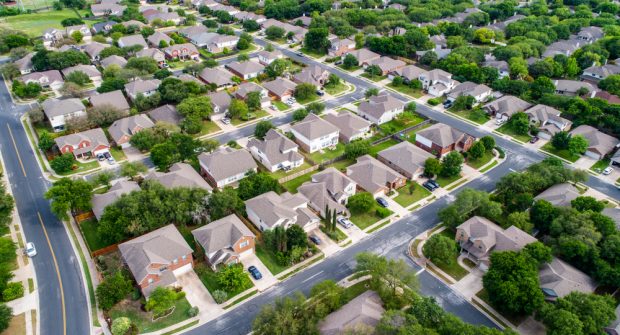 Source: Shutterstock.
Source: Shutterstock.
NAFCU Chief Economist Curt Long said Monday he expects existing home sales will remain steady this year, limited mostly by supply.
His comments came after the National Association of Realtors (NAR) reported that existing home sales rose 2% from June to July to a seasonally-adjusted annual rate of 5.99 million homes.
Recommended For You
"Existing home sales rose for the second month in a row fueled by low rates and a recovering job market," Long said. "Demand is very strong and although supply is still tight, homebuilding has picked up."
The NAR report showed sales of single-family homes, townhomes, condominiums and co-ops in July were 1.5% higher than in July 2020.
There were 1.32 million homes on the market July 31, up 7.3% from a month earlier and down 12% from a year earlier. The supply of unsold homes would last 2.6 months at the present sales pace, up slightly from June's 2.5-month inventory but down from 3.1 months in July 2020.
"We see inventory beginning to tick up, which will lessen the intensity of multiple offers," NAR Chief Economist Lawrence Yun said.
"Much of the home sales growth is still occurring in the upper-end markets, while the mid- to lower-tier areas aren't seeing as much growth because there are still too few starter homes available," Yun said.
The median existing-home price for all housing types in July was $359,900, up 17.8% from July 2020 with gains in every region.
"Although we shouldn't expect to see home prices drop in the coming months, there is a chance that they will level off as inventory continues to gradually improve," Yun said.
 Curt Long
Curt Long Long, of NAFCU, said the slowing of price increases has worried some homeowners on the sidelines that they might miss out on the current record prices, "generating more listings from sellers who want to take advantage of the market while it remains favorable."
On the construction side, Long said housing starts fell 7% this month while permits rose 2.6%.
"Homebuilders have also sold more houses than they can build and have had to pause sales to catch up," he said. "Interest rates are expected to stay very low into the medium-term, increasing demand."
NAR found homes typically remained on the market for 17 days in July, unchanged from June and down from 22 days in July 2020.
First-time buyers accounted for 30% of sales in July, down from 31% in June and down from 34% in July 2020.
Individual investors or second-home buyers, who account for many cash sales, purchased 15% of homes in July, up from 14% in June but even with 15% from July 2020. All-cash sales accounted for 23% of transactions in July, even with June and up from 16% in July 2020.
Callahan & Associates, the Washington, D.C., credit union company, estimated Aug. 11 that credit unions originated $81 billion in first mortgages in the second quarter, up from $74 million in the first quarter and about the same as in 2020′s second quarter.
Among all lenders, second-quarter mortgage originations were $460 billion, up 44% from the first quarter and up 32% from a year earlier, according to the Mortgage Bankers Association.
The MBA's Aug. 22 forecast showed purchase originations falling 9.3% from the second quarter to the third quarter, and rising 3.8% in the fourth quarter. For the year, the MBA forecast purchase originations will rise 14% to $1.63 trillion.
© 2025 ALM Global, LLC, All Rights Reserved. Request academic re-use from www.copyright.com. All other uses, submit a request to [email protected]. For more information visit Asset & Logo Licensing.








